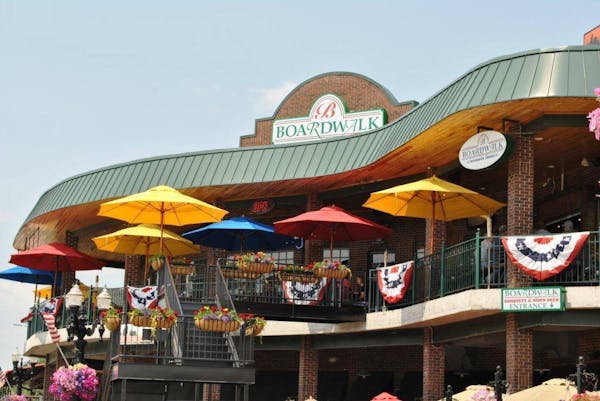Gov. Tim Walz said he needs more time to decide whether bars, restaurants, gyms and other gathering spots will remain closed after the restrictions expire next Friday.
An announcement about the restrictions was initially expected to come at Walz's Friday afternoon press briefing, but it is now scheduled for Wednesday, a spokesman for the governor said.
"I think we are going to need a little bit more time to get this right," Walz said.
The daily number of new COVID-19 infections in Minnesota has dropped significantly from record highs in late November, with 3,773 cases reported Friday.
It is unclear if the decrease in infections is linked to the closure restrictions, which began Nov. 20 and are ending their third week, or a less-than-expected surge after the Thanksgiving holiday two weeks ago.
"It really takes a full four weeks to see the full effect," Minnesota Health Commissioner Jan Malcolm said.
The COVID-19 data released daily by health officials reflects infections that surfaced several weeks earlier due to delays in sample collection, test processing and test reporting.
Aside from the delays, Malcolm said that even with the case counts falling, Minnesota is still seeing high rates of virus transmission.
Four weeks ago the state was seeing an average daily case growth rate of 123 new infections per 100,000 residents.
Now that number is at 84, yet still well above the danger level of 10.
"We have been very grateful that the increases have slowed and have come down a bit," she said. "This is still an extremely high rate of the virus in our communities."
The shutdown order also closed entertainment venues and limited the size of social gatherings to immediate household members only, just one week before Thanksgiving.
Walz said he might consider tweaking the restrictions for Christmas.
"I think it would look fairly similar," he said. One option being discussed is allowing larger outdoor gatherings, but given the season, that might require campfires or portable outdoor heaters, he said.
"Those are things that we are trying to look at," Walz said. "At this time no decision is made."
Likewise, some tinkering might be made to restrictions on restaurants and bars, including possibly allowing them to open at 25% of capacity.
"We are trying to consider everything," he said. "There are a whole lot of things we are thinking about."
The Legislature is negotiating an economic relief package that could help some businesses most affected by the pandemic.
It will be taken up at a special session scheduled for Monday.
Walz said the future of the mitigation measures was not part of the negotiations. Rather, the Legislature's actions could influence his decision about the closure orders.
"It would be my hope that we pass a package of relief on Monday that could help us inform where we can strike the proper balance," he said, cautioning that turning the "dial to open" potentially means more virus infections.
The November COVID-19 case surge may have passed, but the fatalities caused by it are still being seen in high numbers.
Another 94 deaths were reported by state health officials Friday, the second-highest daily total of the pandemic.
Among the deceased was a person older than 100. Six of the people who died were younger than 60, including two in their 30s. Long-term care residents accounted for 52 of the deaths.
Minnesota now has seen 4,292 fatalities from the coronavirus and is on pace to surpass 5,000 deaths by the end of the year.
A total of 58,497 test results were reported to state health officials, a one-day increase of 40%.
An estimated 327,509 of the 370,968 who tested positive are considered to be no longer infectious and don't require isolation.
Most who develop serious COVID-19 complications have underlying health conditions, including heart, lung or kidney disease.
The number of COVID-19 patients receiving hospital care in Minnesota has decreased slightly, with 343 getting intensive care and 1,118 in non-ICU beds. The number of beds in use for COVID-19 patients altogether showed a one-day decrease of 5%, according to a state dashboard.
Still, 91% of all beds in the state are in use. Shortages can still happen if hospitals run out of workers to staff the beds due to illness or high-risk exposures to those with COVID-19.
"Across the Twin Cities we could be in a situation … where we can't find a bed for them in the Twin Cities," said Mimi Keeler, an emergency room nurse at St. Joseph's Hospital in St. Paul. "They may need to go to Duluth, they may need to go to Red Wing."
"It is scary," she said. "Our patients deserve to be able to have the care that they need."
Staff writer Christopher Snowbeck contributed to this report.
Glenn Howatt • 612-673-7192

Tesla recalling nearly 4,000 Cybertrucks because accelerator pedal can get stuck
Stock market today: Wall Street limps toward its longest weekly losing streak since September
BNSF Railway says it didn't know about asbestos that's killed hundreds in Montana town
FedEx pledges $25 million over 5 years in NIL program for University of Memphis athletes

